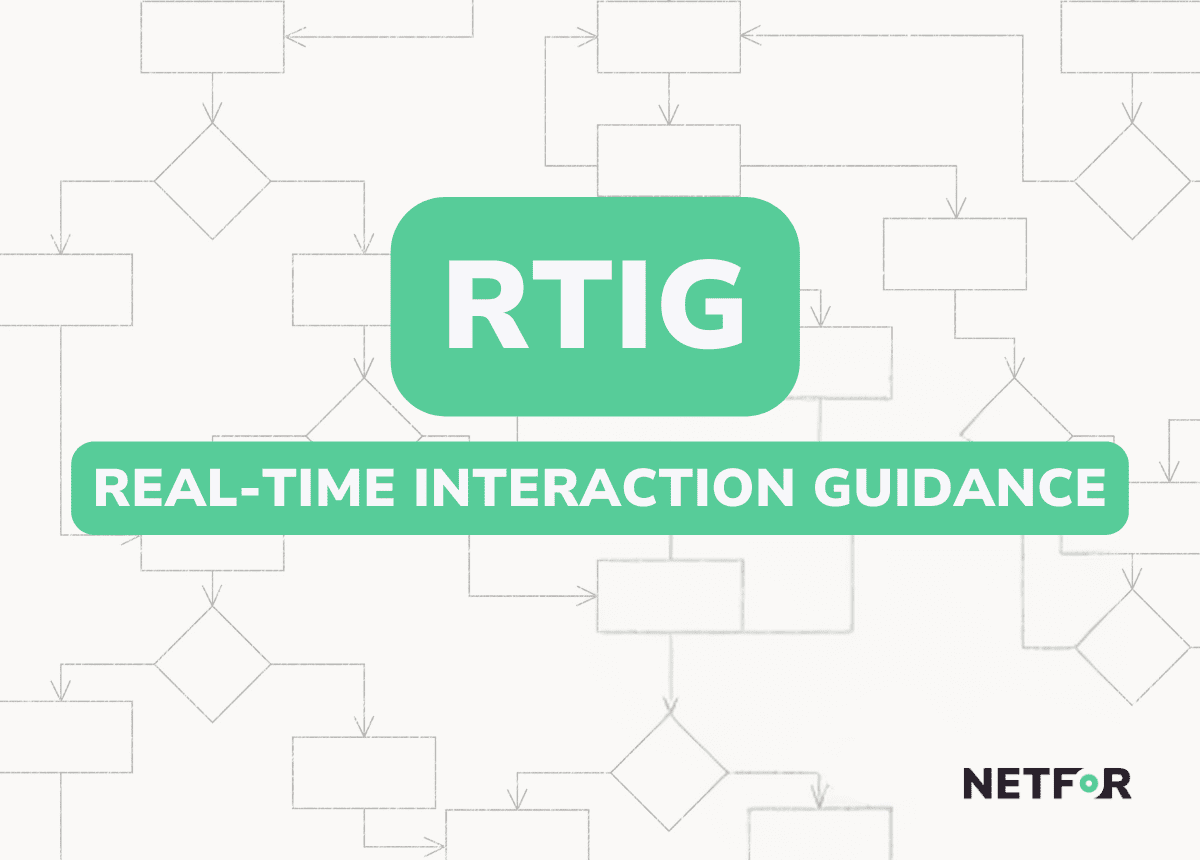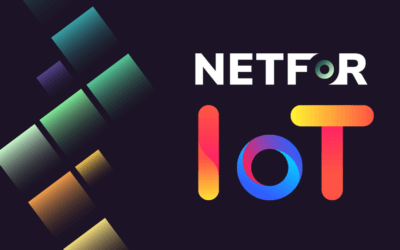Problem: The customer called with what they thought was a simple question. Ten minutes later, they ended the call furious with the company and its apparently defective product — and the customer service agent handling the call never had a clue.
When people talk face-to-face, it’s easy to pick up visual clues that someone is getting confused, frustrated, or irritated with what we’re saying, so we immediately change our approach in hopes of salvaging the conversation and the relationship. But nobody can see those critically important visual clues when they’re handling a customer support call or conducting a chat. It’s no wonder many customer contacts go bad.
Now a practical application of artificial intelligence (AI) offers a proven way to keep that from happening. Handling outsourced customer support for a wide range of clients is a key line of business for Netfor, and it’s why we’re excited about a new AI-based tool called Real-Time Interaction Guidance (RTIG) we have developed. You see, we take pride in earning some of the industry’s highest rankings for customer satisfaction with the service we deliver, and RTIG is only going to help our agents do even better.

In simple terms, RTIG listens in on calls and reads chats. It watches for a long list of “trigger words” related to the client’s business — and it “listens” to the direction the call or chat is taking. It can recognize the customer’s (and agent’s) emotional state, spot interruptions, and detect whether the agent is using active listening as the customer describes the issue.
Top 10 Product Trigger Words for Service Desk:
- Fire
- Explode
- Stitches
- Burn
- Police
- Fire Department
- Hospital
- Safety Hazard
- Hurt
- Shock
… And RTIG knows the difference between: “I touched the lid and received a shock.” and “I burnt my burger and could hardly slice through it, boy, was I shocked.”
Picking Up The Pace
Based upon what it “hears,” RTIG instantly presents guidance to the agent to improve their handling of a call. For example, an agent might not recognize that a caller is getting frustrated because they don’t believe the agent is attentively listening, so the system will flash a message suggesting a better strategy. Depending on the circumstances, it might involve recommending the agent talk less and listen more, or it could suggest the agent restate the customer’s concerns to show they’re getting the attention they expect.
Other recommendations RTIG might tell the agent are:
- Reassure
- Laugh
- Be Agreeable
- Validate their feelings
- Ask follow-up questions
Suppose the call is about a problem with a piece of technology. If RTIG notices the customer using the phrase “it’s getting hot to the touch,” it can give the agent follow-up questions or links to knowledge base articles related directly to that problem. The information helps the agent appear to be more knowledgeable or helpful, so the customer is happier with what becomes a quicker interaction. If an agent starts interrupting a caller, RTIG can alert them to the problem and remind them to spend less time talking. Rather than scold agents, the system provides friendly coaching.
What Do You Get Out of RTIG?

Besides improving the quality and resolution of customer service requests, RTIG provides money-saving benefits. Because it helps agents optimize interactions, average customer support calls get shorter. In addition to happier customers, that means an agent can resolve more customer issues in a shift — and when calls get shorter, the cost of handling them decreases.
Benefits of RTIG:
- Real-time feedback
- Soft skill behaviors
- Emotion detection
- Active listening prompts
- Instant guidance
- Reduced call duration
- Increased customer satisfaction
- Enhanced agent performance
- Cost savings
The technology also helps our supervisors become more effective at coaching agents, an inherent challenge for remote-first companies like ours.
Here is what we have found to be true about how Internal Help Desks Often Fall Short.
RTIG: Eliminating the Slack
Until now, a supervisor would have to replay past calls before reaching out to the agent to offer direction and coaching. That took a substantial amount of time, and frankly, listening to other people’s calls can get tiresome. Instead, RTIG monitors interactions continuously, and shares its responses with the agent’s supervisor in real-time. If the supervisor notices the system is detecting issues repeatedly or sees that the agent doesn’t seem to be their normal cheerful self, they can immediately check with the agent to make sure they’re not ill or facing another problem. That kind of supervision is dramatically more effective than a follow-up conversation long after the interaction. You can’t improve a customer’s experience after that experience has ended.
That coaching benefits all agents, whether they’re new to the client or have been handling support calls for years. After all, handling a support call may involve simultaneously juggling several different on-screen applications and sources of information, which can mean missing something the caller said or not noticing a shift in their tone of voice. RTIG helps agents remain focused on the conversation instead of things that can easily become distractions.
These days, we hear a lot about the promise of AI and what it may do for business in the future. RTIG is already helping Netfor get even better at serving our clients, boosting their reputations by ensuring customers get the fast, accurate — and even friendlier — help they need. That’s a win for everyone involved.




